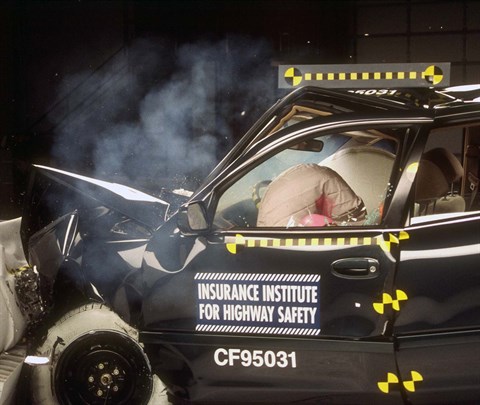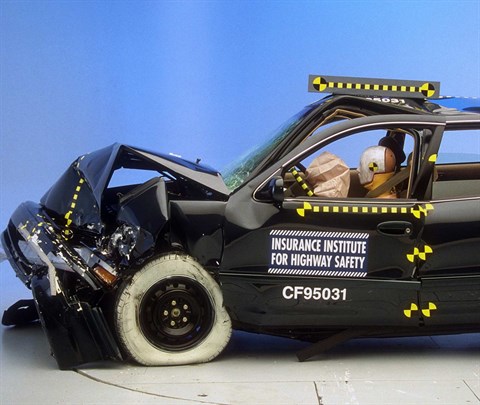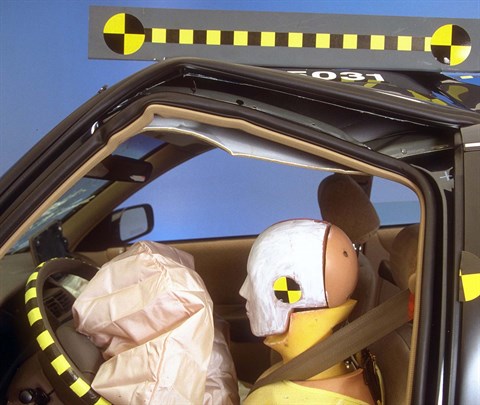Moderate overlap front: original test
Rating applies to 1995-97 models
Tested vehicle: 1996 Toyota Avalon XL 4-door
The Toyota Avalon was introduced in the 1995 model year.
| Overall evaluation | |
|---|---|
| Structure and safety cage | |
| Driver injury measures | |
| Head/neck | |
| Chest | |
| Leg/foot, left | |
| Leg/foot, right | |
| Driver restraints and dummy kinematics |

Action shot taken during the frontal offset crash test.

There was moderate occupant compartment deformation in the offset test.

Buckling of the left roof rail caused it to separate from the roof between the car's A-pillar and middle of the rear door.
Technical measurements for this test
Measures of occupant compartment intrusion on driver side
| Test ID | CF95031 |
|---|---|
| Footwell intrusion | |
| Footrest (cm) | 17 |
| Left (cm) | 26 |
| Center (cm) | 26 |
| Right (cm) | 23 |
| Brake pedal (cm) | 22 |
| Instrument panel rearward movement | |
| Left (cm) | 11 |
| Right (cm) | 9 |
| Steering column movement | |
| Upward (cm) | 9 |
| Rearward (cm) | 8 |
| A-pillar rearward movement (cm) | 9 |
Driver injury measures
| Test ID | CF95031 |
|---|---|
| Head | |
| HIC-15 | 274 |
| Peak gs at hard contact | 16 |
| Neck | |
| Tension (kN) | 1.4 |
| Extension bending moment (Nm) | 26 |
| Maximum Nij | 0.30 |
| Chest maximum compression (mm) | 34 |
| Legs | |
| Femur force - left (kN) | 2.2 |
| Femur force - right (kN) | 0.3 |
| Knee displacement - left (mm) | 2 |
| Knee displacement - right (mm) | 13 |
| Maximum tibia index - left | 1.87 |
| Maximum tibia index - right | 0.45 |
| Tibia axial force - left (kN) | 1.6 |
| Tibia axial force - right (kN) | 1.2 |
| Foot acceleration (g) | |
| Left | 68 |
| Right | 61 |
